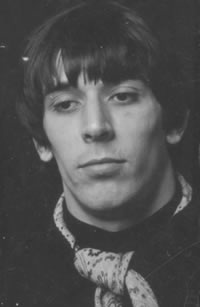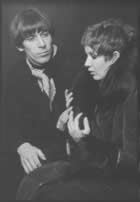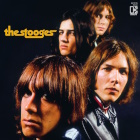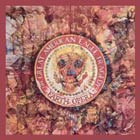

Timeline: 1969
Dream Interpretation
On February 6 he records Dream Interpretation with Tony Conrad on violin. The 20 minutes plus piece is released as the title track of the Dream Interpretation: Inside The Dream Syndicate Vol II album in 2001.

Divorce Betsey Johnson
In March Cale and Betsey Johnson file for divorce. The marriage ends in 1971.
"Betsey worked hard all the time, like Andy. She would be in her showroom, and she often spent weeks in San Francisco or Los Angeles, where her factories were.I realised our career paths were so divergent that we actually lived in completely different worlds. Betsey seemed able to pass in and out of my world with ease, but I could not negotiate hers. I felt stymied by it. At that point I would get lonely and find somebody else. Betsey and I were both interested in our careers to the exclusion of personal relationships."
They keep in touch over the years. She took the cover photo for his Music For A New Society album.

Producing The Stooges
In April Cale produces the classic Stooges debut album at The Hit Factory in New York City. He plays viola on We Will Fall, and piano and sleigh bells on I Wanna Be Your Dog.
Cale got the job through Elektra owner Jac Holzman:
"Jac took me to Detroit to see the MC5 recording live. The opening band was the Stooges... I fell in love with Iggy's character and personality as a performer. The challenge was to get that magic and impish behavior onto a record."

The label decided that the Cale mixes were too arty and went for a mix made by Iggy Pop and Jac Holzman. Four tracks appear in the original mix on the 2005 DeLuxe Edition and another one as the B-side of a 7" 45 rpm single. All original mixes are included on the 2010 Rhino Handmade edition. An LP with his mixes finally sees the light of day in 2020.

Earth Opera
Plays viola on the The Great American Eagle Tragedy album by the American psychedelic rock group Earth Opera.
Recording "Vintage Violence"
The songs for what become his debut album Vintage Violence are recorded on October 27 & 29, using Garland Jeffreys' band Grinder's Switch and Harvey Brooks on bass. Some polishing is done in November. Total costs: $15,000. He co-produces it with Lewis Merenstein:
"Circumstances played a great role in why John recorded with Garland and the nature of how the music turned out. I'd just signed Garland to produce him, and we were putting together a band. I don't remember the circumstances, but we all got together and met in Woodstock. Cale liked the band, and everybody got along. John was obviously seeking more of his own personality, apart from The Velvet Underground sound and personality that he had doing that; John was trying to re-identify himself as John Cale. It was convenient for everybody, and we all enjoyed it. John McClure okayed me doing it because he saw how I worked with Van Morrison.
Garland was putting together something that might have been reminiscent of The Band. Keyboardist Stan Szelest was with The Band when it first started. Then you add John, with his lyrics and his sound, to it, you get a very unique combination. I had other ideas in my mind to talk to John about. But after the meeting with Garland and hearing the band, he felt very comfortable with it. And I didn't feel uncomfortable, because it was different enough from The Velvet Underground that it could be recognized as John Cale rather than The Velvet Underground, which is what I wanted too. It's no different than Van [Morrison] doing 'Brown Eyed Girl,' and then Astral Weeks."